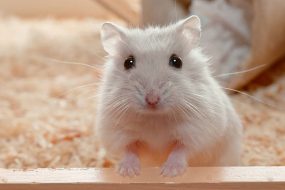Chickens are delightful and low-maintenance pets, but like any other living creature, they can face health issues from time to time. One of the concerning behaviors you might observe in your flock is chickens laying on their sides. This unusual posture can be a sign of various health problems that require immediate attention. In this comprehensive guide, we’ll walk you through the reasons why chickens lay on their sides and provide valuable insights on how to prevent and treat this issue, ensuring your feathered friends lead a happy and healthy life.
Also, Read >>>>>>> A Comprehensive Guide To Unlocking the Potential of Color Pack Layer Chickens
Why Do Chickens Lay on Their Sides?
Before we dive into prevention and treatment, let’s understand why chickens may adopt the strange habit of laying on their sides.

Heat Stress:
Chickens can become overheated, especially during hot summer months. When they’re too hot, they may lay on their sides to cool down, as this position exposes their vent area, which helps dissipate heat.
Illness or Injury:
Chickens might lay on their sides if they’re unwell or have suffered an injury. This behavior allows them to conserve energy and rest.
Egg Laying Problems:
Hens experiencing difficulties laying eggs may assume a side position. It can be due to egg binding, where an egg gets stuck in the reproductive tract, causing discomfort.
Nutritional Deficiencies:
Inadequate nutrition can lead to muscle weakness, making it more comfortable for chickens to lie down.
Parasites or Disease:
Certain parasites or diseases can weaken chickens, making them lethargic and prone to laying on their sides.
Parasites:
Internal Parasites:
-
- Worms (Roundworms, Tapeworms, etc.): These parasites can infest a chicken’s digestive system, leading to weight loss and poor egg production.
- Coccidia: A protozoan parasite that can cause bloody diarrhea and lethargy in chickens, especially young ones.
- Gapeworm: This worm can lodge in a chicken’s trachea, causing respiratory distress.
External Parasites:
-
- Mites: Common mites like Northern Fowl Mite and Red Mite can infest feathers and skin, leading to itching and feather loss.
- Lice: These insects can also affect feathers and skin, causing discomfort and reduced egg production.
- Fleas: While less common, fleas can occasionally infest chickens and cause irritation.
Ticks:
Ticks can attach to a chicken’s skin, transmit diseases, and lead to skin irritation.
Diseases:
- Avian Influenza (Bird Flu): A highly contagious viral disease that can lead to respiratory distress, drop in egg production, and high mortality rates.
- Newcastle Disease: A viral disease that affects the respiratory, nervous, and digestive systems of chickens, causing symptoms like coughing, sneezing, and paralysis.
- Infectious Bronchitis: A viral respiratory disease that can cause coughing, sneezing, and decreased egg production.
- Marek’s Disease: A viral disease that affects the nervous system and can lead to paralysis and tumors.
- Fowl Pox: A viral disease characterized by lesions on the skin, eyes, and respiratory system.
- Coryza: A bacterial respiratory disease that causes facial swelling, nasal discharge, and a drop in egg production.
- Blackhead (Histomoniasis): A protozoan disease that affects the liver and can be fatal to chickens.
- Botulism: Caused by toxins produced by Clostridium botulinum bacteria, this disease can lead to paralysis and death.
- Egg Drop Syndrome (EDS): A viral disease that can result in a decrease in egg quality and production.
- Coccidiosis: An intestinal disease caused by the protozoan parasite Eimeria, leading to diarrhea and poor growth.
- Gout: A metabolic disorder that can result in joint inflammation and kidney damage.
- Aspergillosis: A fungal disease that affects the respiratory system, particularly in young chicks.
- Aflatoxicosis: Caused by the ingestion of aflatoxins from contaminated feed, this disease can lead to liver damage.
- Rickets: A nutritional disorder caused by a deficiency of vitamin D, calcium, or phosphorus, resulting in weakened bones.
- Sour Crop: A digestive disorder where the crop becomes impacted and can lead to discomfort and poor digestion.
- Necrotic Enteritis: A bacterial disease that affects the intestines and can cause severe illness and death.
- Fatty Liver Hemorrhagic Syndrome (FLHS): A metabolic disorder that results from an excessive intake of energy-rich feed, leading to liver damage and bleeding.
Preventing Chickens from Laying on Their Sides:
Prevention is often the best medicine when it comes to chicken health. Here are some tips to keep your chickens from adopting the side-laying posture:
Provide Adequate Ventilation:
Ensure your coop has proper ventilation to prevent heat buildup. Adequate airflow keeps your chickens cool during hot weather.
Monitor Nutrition:
Feed your chickens a balanced diet with sufficient protein, vitamins, and minerals. Consult a poultry nutritionist to create the perfect diet for your flock.
Regular Health Checks:
Perform routine health checks to detect any issues early. Look for signs of illness, injury, or abnormal behavior.
Hydration:
Always provide access to clean, fresh water. Dehydration can lead to weakness and a higher likelihood of side laying.
Clean Environment:
Maintain a clean coop to prevent the buildup of harmful bacteria and parasites. Regularly change bedding and keep the area dry.
Treating Chickens Laying on Their Sides
If you notice a chicken lying on its side, it’s crucial to take immediate action. Here’s what you can do:
Isolate the Affected Bird:
Separate the sick or injured chicken from the rest of the flock to prevent potential stress and further injury.
Consult a Veterinarian:
If you’re unsure about the cause or how to treat the issue, seek professional advice from a veterinarian with poultry expertise.
Address Heat Stress:
If the chicken is laying on its side due to heat stress, move it to a cooler area and provide shade and fresh water.
Egg Binding:
For hens experiencing egg binding, a warm bath can help relax muscles and potentially facilitate egg laying. Consult a vet for further guidance.
Medication and Treatment:
Depending on the underlying issue, your vet may prescribe medications, such as antibiotics or pain relievers, or suggest other treatments.
Also, Read >>>>>>> A Comprehensive Guide To Unlocking the Potential of Color Pack Layer Chickens
Conclusion:
Chickens laying on their sides can be a distressing sight for any poultry owner, but with the right knowledge and proactive care, you can help your birds stay healthy and avoid this unusual behavior. Regular monitoring, a balanced diet, and a clean living environment are key to preventing chickens from laying on their sides. And when issues do arise, swift action and professional guidance can make all the difference in nursing your feathered friends back to good health.
By following the advice in this complete guide, you’ll be well-equipped to provide your chickens with the best care possible, ensuring they lead happy and active lives in your backyard or coop. Remember, a vigilant and caring poultry owner is the best defense against chicken health problems.
Also, Read >>>>>>> A Comprehensive Guide To Unlocking the Potential of Color Pack Layer Chickens












One reply on “A Complete Guide to Causes Prevention and Treatment of Chickens Laying on Their Sides”
[…] Read, Also >>>>>>A Complete Guide to Causes Prevention and Treatment of Chickens Laying on Their Side […]